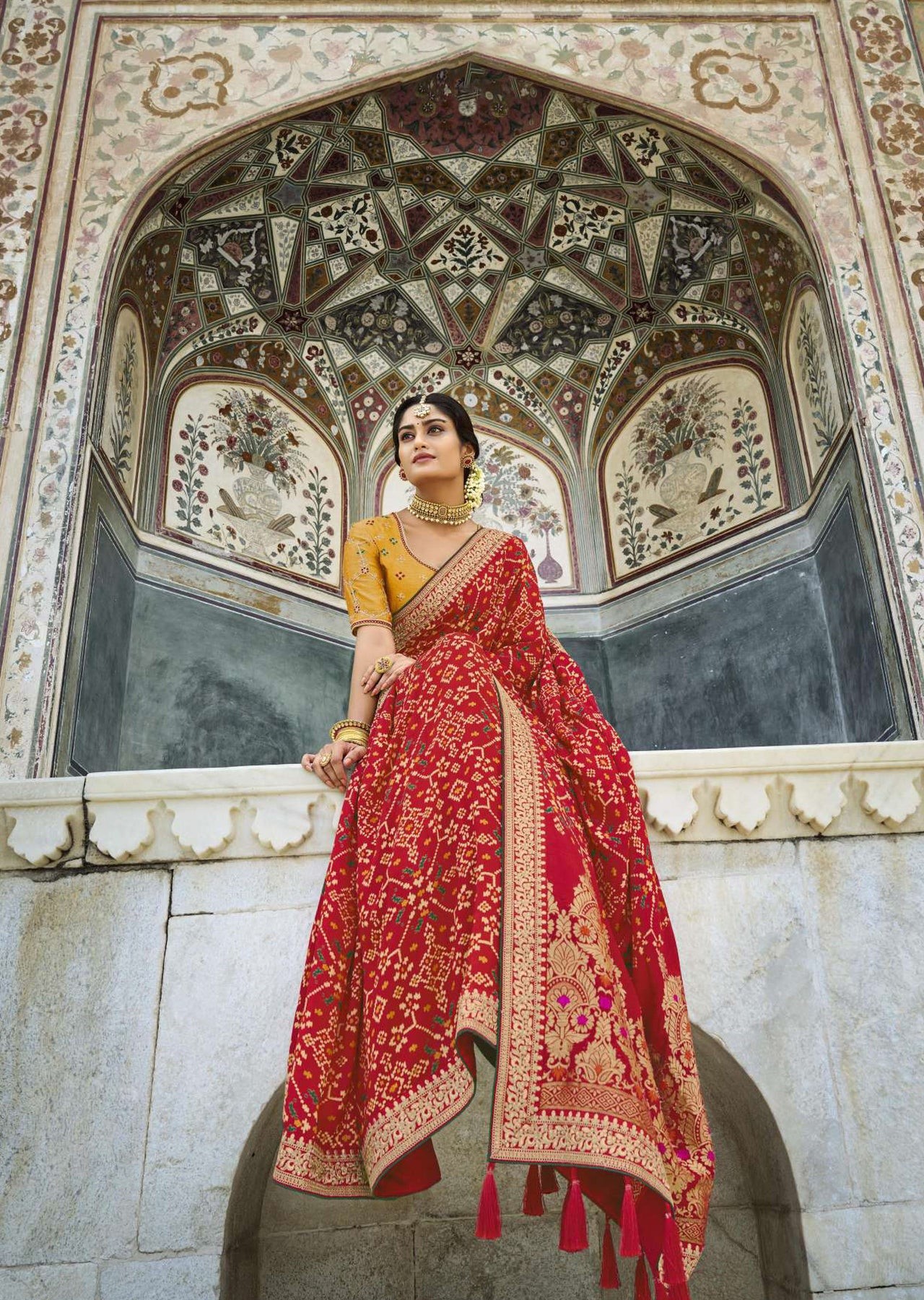What is it that makes a Banarasi saree so special? The charm of the Banarasi saree is not just due to its rich traditional heritage but also due to the intricately weaved patterns and the rich colors. For many, the Banarasi saree is a symbol of luxury and beauty and is worn by both men and women. Even if you do not like wearing sarees, Banarasi weave and handloom prints can still add charm to your attire. Wondering How? Just Go for a vibrant Banarasi dupatta, pair it on any Anarkali suits or lehengas, compliment it with oxidized jhumkas, and you are all set to twirl.
This post discusses the beauty and different fabrics used in weaving a pure Banarasi saree and provides a few tips to spot an authentic one.
Fabric Variants Used in a Banarasi Silk Saree!
●Katan- Pure Silk
Katan is a simple silk material woven with pure silk strings that are later on woven into sarees. Nowadays, looms are used for weaving these sarees. In ancient times, they were handwoven utilizing a handloom.
● Organza/ Zari or Kora with Silk
Another fabric is organza Silk which is usually formulated from pure quality yarn and is curated by tightly twisting several threads and then weaving them together to give firm structure and shine, thereby completing their final look.
● Georgette Banarasi Saree:
A preferred choice for modern Banarasi, Georgette is a fabric that is very light. Georgette is a fabric formulated from finely twisted threads/yarns that were originally made from silk. The shiny georgette fabric, made of crepe yarn, makes these banarasi sarees a thrill to drape with their contemporary yet comfortable feel or appeal.
● Shattir:
Shatter is another material that is widely used for making banarasi silk saree. This is the only fabric used to produce exclusive as well as modern Banarasi saree designs under the name Banarasi.
Designs (Motifs)-
There are many traditional Indian designs that are used to create beautiful and intricate designs on cloth. One such design is Banarasi. This saree is characterized by its intricate checks, weaving, and floral motifs. The natural color of threads used in the weaving of banarasi silk saree is hand-dyed with natural dyes, creating a beautiful and intricate palette. The intricate detail of these designs is what has given these sarees their charm for centuries.
Making of a pure Banarasi saree-
It takes about 20 days to a month for completing the whole weaving process of a Banarasi Silk saree. However, it totally depends upon the complexity of its design and patterns. To knit the perforated cards on the loom, different yarns and colors are used.
Identification of Pure Banarasi saree-
A pure banarasi saree is a saree that is woven from 100% pure silk with a gold or silver zari border. Elaborated details on these sarees will suggest whether it is an authentic Banarasi saree or not. A Banarasi silk saree is characterized by Mughal-inspired motifs like the amru, domak, and ambi. It may also feature amazing floral and foliage motifs like bel in zari and kalga. You will not find these fine motifs on fake sarees. You can also check the authenticity of banarasi sarees by just looking at the reverse side of the saree and its finishing.
Bottom Line
There are many other Indian traditional and handloom sarees fabrics like Kanjeevaram, paithani, Chanderi, Maheshwari, and Khadi. But the craze of Banarasi sarees has increased tremendously because of the aura it holds, huge variants, and social importance, especially Indian Weddings that can never be overlooked without Banarasi sarees. The love for the Banarasi silk saree is not only confined to the Indian textile and fashion industry but has flourished in the international world as well.


